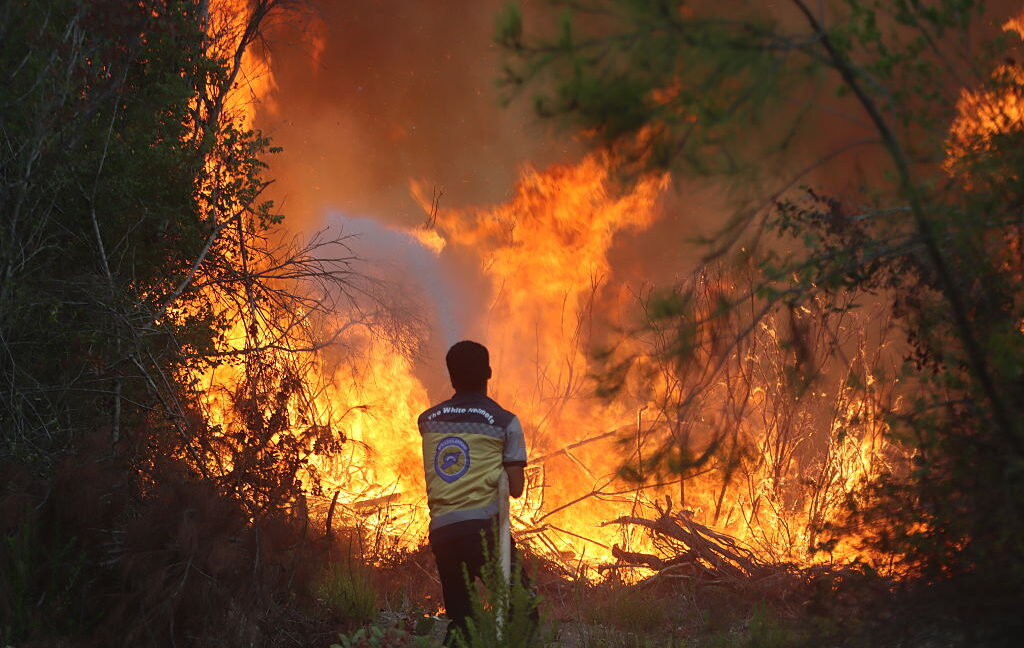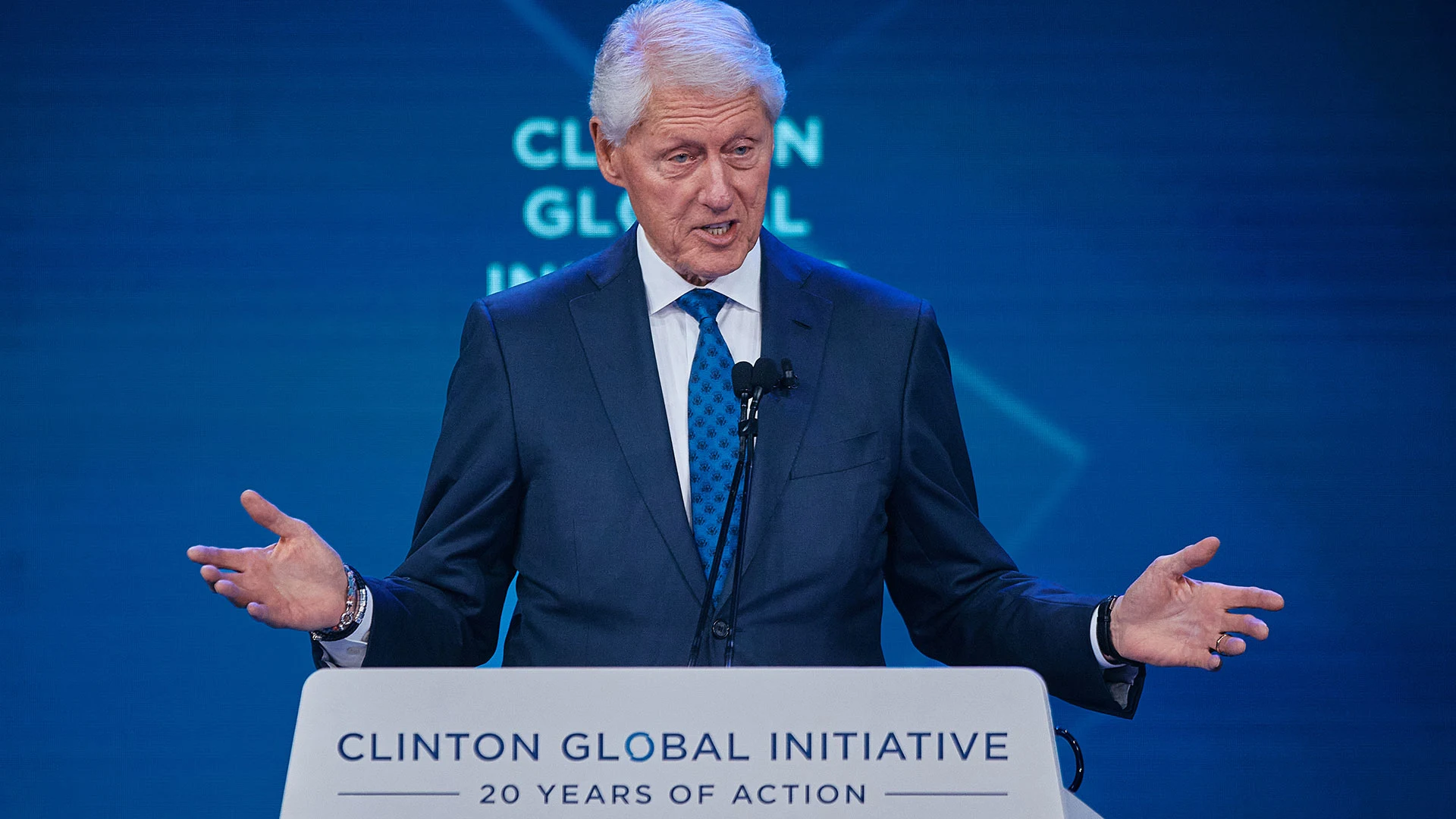
We’re about a quarter of the way through the 21st century.
Summers across the global north are now defined by flash floods, droughts, heat waves, uncontainable wildfires, and intensifying named storms, exactly as predicted by Exxon scientists back in the 1970s. The United States secretary of health and human services advocates against using the most effective tool we have to fight the infectious diseases that have ravaged humanity for millennia. People are eagerly lapping up the misinformation spewed and disseminated by AI chatbots, which are only just getting started.
It is against this backdrop that a climate scientist and a vaccine developer teamed up to write Science Under Siege. It is about as grim as you’d expect.
Michael Mann is a climate scientist at the University of Pennsylvania who, in 1998, developed the notorious hockey stick graph, which demonstrated that global surface temperatures were roughly flat until around the year 1900, when they started rising precipitously (and have not stopped). Peter Hotez is a microbiologist and pediatrician at Baylor College of Medicine whose group developed a low-cost, patent-free COVID-19 vaccine using public funds (i.e., not from a pharmaceutical company) and distributed it to almost a hundred million people in India and Indonesia.
Unlikely crusaders
Neither of them anticipated becoming crusaders for their respective fields—and neither probably anticipated that their respective fields would ever actually need crusaders. But they each have taken on the challenge, and they’ve been rewarded for their trouble with condemnation and harassment from Congress and death threats from the public they are trying to serve. In this book, they hope to take what they’ve learned as scientists and science communicators in our current world and parlay that into a call to arms.
Mann and Hotez have more in common than being pilloried all over the internet. Although they trained in disparate disciplines, their fields are now converging (as if they weren’t each threatening enough on their own). Climate change is altering the habitats, migrations, and reproductive patterns of pathogen-bearing wildlife like bats, mosquitoes, and other insects. It is causing the migration of humans as well. Our increasing proximity to these species in both space and time can increase the opportunities for us to catch diseases from them.
Yet Mann and Hotez insist that a third scourge is even more dangerous than these two combined. In their words:
It is currently impossible for global leaders to take the urgent actions necessary to respond to the climate crisis and pandemic threats because they are thwarted by a common enemy—antiscience—that is politically and ideologically motivated opposition to any science that threatens powerful special interests and their political agendas. Unless we find a way to overcome antiscience, humankind will face its gravest threat yet—the collapse of civilization as we know it.
And they point to an obvious culprit: “There is, unquestionably, a coordinated, concerted attack on science by today’s Republican Party.”
They’ve helpfully characterized “the five principal forces of antiscience “ into alliterative groups: (1) plutocrats and their political action committees, (2) petrostates and their politicians and polluters, (3) fake and venal professionals—physicians and professors, (4) propagandists, especially those with podcasts, and (5) the press. The general tactic is that (1) and (2) hire (3) to generate deceitful and inflammatory talking points, which are then disseminated by all-too-willing members of (4) and (5).
There is obviously a lot of overlap among these categories; Elon Musk, Vladimir Putin, Rupert Murdoch, and Donald Trump can all jump between a number of these bins. As such, the ideas and arguments presented in the book are somewhat redundant, as are the words used. Far too many things are deemed “ironic” (i.e., the same people who deny and dismiss the notion of human-caused climate change claimed that Democrats generated hurricanes Helene and Milton to target red states in October 2024) or “risible” (see Robert F. Kennedy Jr.’s claim that Dr. Peter Hotez sought to make it a felony to criticize Anthony Fauci).
A long history
Antiscience propaganda has been used by authoritarians for over a century. Stalin imprisoned physicists and attacked geneticists while famously enacting the nonsensical agricultural ideas of Trofim Lysenko, who thought genes were a “bourgeois invention.” This led to the starvation of millions of people in the Soviet Union and China.
Why go after science? The scientific method is the best means we have of discovering how our Universe works, and it has been used to reveal otherwise unimaginable facets of reality. Scientists are generally thought of as authorities possessing high levels of knowledge, integrity, and impartiality. Discrediting science and scientists is thus an essential first step for authoritarian regimes to then discredit any other types of learning and truth and destabilize their societies.
The authors trace the antiscience messaging on COVID, which followed precisely the same arc as that on climate change except condensed into a matter of months instead of decades. The trajectory started by maintaining that the threat was not real. When that was no longer tenable, it quickly morphed into “OK, this is happening, and it may actually get pretty bad for some subset of people, but we should definitely not take collective action to address it because that would be bad for the economy.”
It finally culminated in preying upon people’s understandable fears in these very scary times by claiming that this is all the fault of scientists who are trying to take away your freedom, be that bodily autonomy and the ability to hang out with your loved ones (COVID) or your plastic straws, hamburgers, and SUVs (climate change).
This mis- and disinformation has prevented us from dealing with either catastrophe by misleading people about the seriousness, or even existence, of the threats and/or harping on their hopeless nature, sapping us of the will to do anything to counter them. These tactics also sow division among people, practically ensuring that we won’t band together to take the kind of collective action essential to addressing enormous, complex problems. It is all quite effective. Mann and Hotez conclude that “the future of humankind and the health of our planet now depend on surmounting the dark forces of antiscience.”
Why, you might wonder, would the plutocrats, polluters, and politicians of the Republican Party be so intent on undermining science and scientists, lying to the public, fearmongering, and stoking hatred among their constituents? The same reason as always: to hold onto their money and power. The means to that end is thwarting regulations. Yes, it’s nefarious, but also so disappointingly… banal.
The authors are definitely preaching exclusively to the converted. They are understandably angry at what has been done to them and somewhat mocking of those who don’t see things their way. They end by trying to galvanize their followers into taking action to reverse the current course.
They advise that the best—really, the only—thing we can do now to effect change is to vote and hope for favorable legislation. “Only political change, including massive turnout to support politicians who favor people over plutocrats, can ultimately solve this larger systemic problem,” they write. But since our president and vice president don’t even believe in or acknowledge “systemic problems,” the future is not looking too bright.



